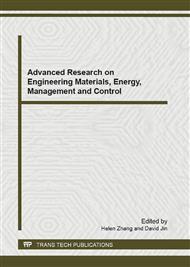[1]
Hazardous Solid Waste Management Hazardous waste management has proposed the concept of from cradle to tomb". The production of hazardous waste is the "cradle" and treatment, storage, and disposal factories (TSD) are the "tomb,. The Law stipulates that in the whole process of waste production, transportation and TSD, there should be unified hazardous waste list to be able to trace back, which is monitored by the federal as well as state EPA. It also formulates that waste producer should make analysis of the waste itself and the underground water and TSD is responsible for the analysis and supervision of others. In the late 1980s, there were thousands of TSD facilities which retrieved hazardous waste in the US, which are in the restraint of RCRA (most boring to most people). Those facilities contain incineration, dehydration and solid waste lantern facilities as well as landfills, surface aquifer and underground water injection wells.
DOI: 10.1089/hzw.1984.1.431
Google Scholar
[2]
Superfund Programme The State Council of US has promulgated Comprehensive Environmental Response Compensation and Liability Act which requires to clean up the polluted hazardous waste sites. It sets up a hazardous substance response trust fund so as to be called Superfund,. These trust funds come from the tax imposed on the manufacturers who make use of crude oil and chemical materials as well as environmental tax levied by the administration. The enterprises should first draw up a schedule concerning the reduction of hazardous waste production refrained from responsibilities on later compliment of waste sites. The insurance industry plays an important role in the compulsory internalization process of external costs. If the insurance market operates properly, those high-risk hazardous waste producers will pay relatively higher insurance expenses functioning as responsibility deposits than low-risk producers or managers, thus forming a economic stimulation to decrease handling fees and insurance expenses. The enterprises will select a smart way and responsibility deposit standard to balance the marginal cost and marginal benefit. From the analysis above, we can see that the internalization process of exterior costs compelled by the government is effectively carrying on.
Google Scholar
[3]
Deposit-Refund Scheme Deposit-refund scheme's function will be maximized if waste is improperly disposed ending up with serious consequences. When controlled materials converge into producing process, the producer or the initial user should pay a certain amount of deposit. In principle, the number of the deposit is based on the social cost caused by illegal management. The responsibility of proper management is transferring among the producer, wholesaler and distributor during the process of production and consumption. This transferring mechanism will be going on until the consumer put the product (or its pack) to the designated recycling centre in order to be reused or properly managed. 5 Suggestions on Solid Waste Management System Improvement in the Twelfth Five-year Plan Period During the twelfth five-year plan period, we have reinforced the need to carry on scientific and sustainable development in our planning. In order to construct an environment-friendly society and establish ecological civilization, we should make greater effort to conserve our environment, which also represents the need of social development. Proper exploitation and utilization of environmental resources should be in line with a scientific and effective management of sold waste for the purpose of creating virtuous circle. If we fail to act now, it would cost more later and we may even repeat the environmental pollution cases happened in industrialized countries. To avoid more historical tragedies like Love Canal accident, China should improve our management on solid waste. Here are my suggestions.
Google Scholar
[1]
Advertise the harmfulness of solid waste to the whole social community and insert the concept of environmental protection into all individuals' minds. To form a good habit of reducing the emissions, reasonable emissions and orderly emissions.
Google Scholar
[2]
Foster the establishment of hazardous solid waste management system to manage in accordance with specific department and sector and at the same time build up monitoring mechanism.
Google Scholar
[3]
Improve legislative system as an guarantee. To assess and revise Environmental Protection Act, Law of Prevention and Control of Atmospheric Pollution and Law on Prevention and Control of Solid Waste Pollution so as to be more scientific, maneuverable and adaptable to new circumstances.
Google Scholar
[4]
Increase the funds in solid waste management departments.
Google Scholar
[5]
Industries aiming to make scientific development in the field of recycling and reusing waste should be promoted through such measures as financial allocations, taxation preference and so on.
Google Scholar


